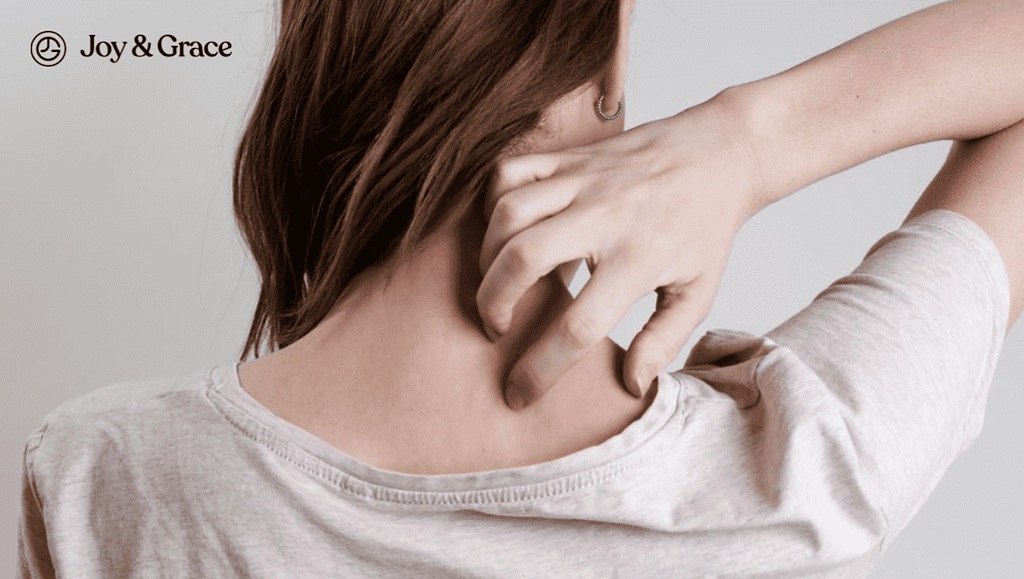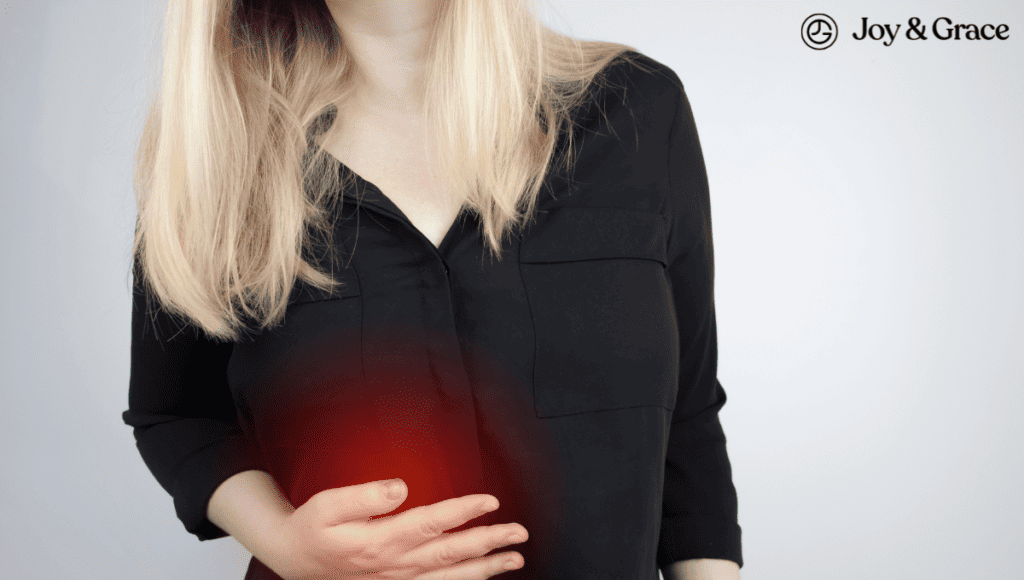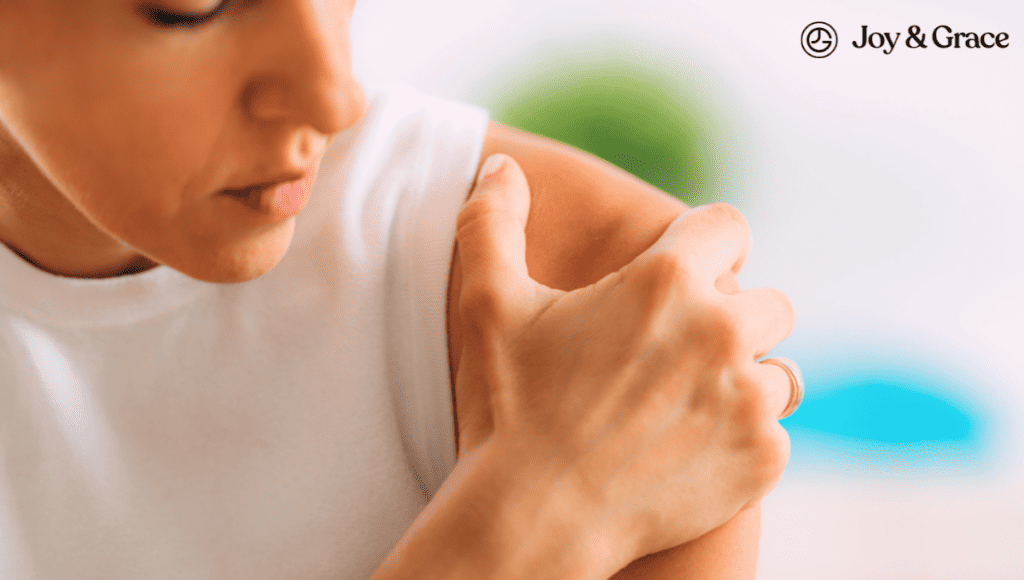No one wants to relive that time when they were a kid when an itchy, blistering rash littered their body. You know what we’re talking about: chicken pox. But did you know it can show up again even after you've had it?
Shingles is the reactivation of the varicella-zoster virus that causes chicken pox. Although chicken pox is now less common due to vaccinations, 4 million Americans used to get it every year. If you do get chicken pox, then you run the risk of developing shingles.
Shingles can appear anywhere in the body. But can it cause neck pain? Continue reading as we unravel the link between shingles and neck pain.
Can Shingles Affect Your Neck?
Yes, shingles can affect your neck. In order for us to understand how shingles affect your neck, we must know our enemy first.
When your body fights off the chicken pox infection, the virus does not really leave your body. Instead, it actually likes to hide in your nerves, brain, or spine in what’s called your “dorsal root ganglions” and stays "asleep." Most of the time, the virus doesn't really do any harm and just likes to hang out in your nervous system.
So how does shingles affect the neck? Well, the dorsal root ganglion actually acts like a port and receives multiple nerves from all over your body. When the virus becomes reactivated, it travels down and wreaks havoc on a “dermatome”.
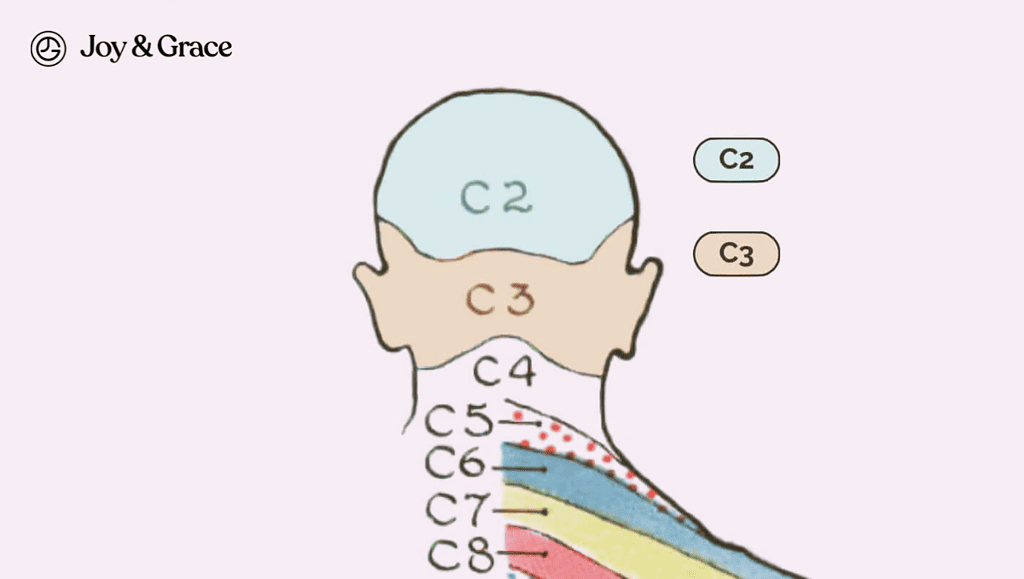
Dermatomes are areas of skin supplied by a single dorsal root ganglion and can cover multiple areas of the body. For example, the C3 dermatome covers the scalp around the ear, the jawline, and the front and sides of the neck.
If the virus infects the dorsal root ganglion that supplies the C3 dermatome, it can cause painful rashes on your neck. In 20% of cases, the virus infects the cervical dermatomes, which correspond to your neck and shoulder areas.
Can Shingles Cause Head And Neck Pain?
Depending on the dermatomes affected, shingles may cause head and neck pain. One form of shingles that often causes head and neck pain is herpes occipitocollaris. In this form, the virus invades the nerves of the C2-C3 dermatomes. These dermatomes correspond to the back of the head, the area around the ears, the jawline, and the neck.
If you have herpes occipitocollaris, you may experience headaches and scalp pain. You may also feel a sharp, electric-like pain in your neck. Other symptoms include ear and jaw pain.
Although rare, herpes zoster may also invade your brain and spine's protective covering, called the meninges. If this happens, you may experience severe headaches, neck pain, sensitivity to light, and fever.
Can Shingles Pain Radiate To Other Parts Of The Body?
Yes, the pain from shingles can travel to other body parts that are supplied by the same nerves. Let’s take our example of the C3 dermatome.
When the C3 dermatome is involved, your initial symptom may be pain on one side of the neck. However, since the ears and jaw share the same dermatome as your neck, the pain may also travel to these areas.
What Are The Symptoms Of Shingles On The Neck?
The symptoms of shingles on the neck do not really differ from other areas of the body. You may experience:
- Tingling sensation or pain on one side of the neck
- Itchy, closely grouped blisters on one side of the neck
- A sharp, stabbing pain that can travel from the neck down to the shoulder and arms
- Swollen lymph nodes
Can Shingles Cause Neck Stiffness?
A stiff neck is rare in shingles, even with severe pain. Oftentimes this is a warning sign that the virus has spread to your meninges. As mentioned earlier, the virus can invade the meninges resulting in viral meningitis.
The meninges are the layers of tissue that cover and protect your brain and spine. They run from the neck down to the upper back, and of the two areas, the neck is the only one capable of a large degree of movement. If the meninges are inflamed, any pain and reduction of movement will be more noticeable in the neck, resulting in a stiff neck.
What Are The First Signs Of Having Shingles?
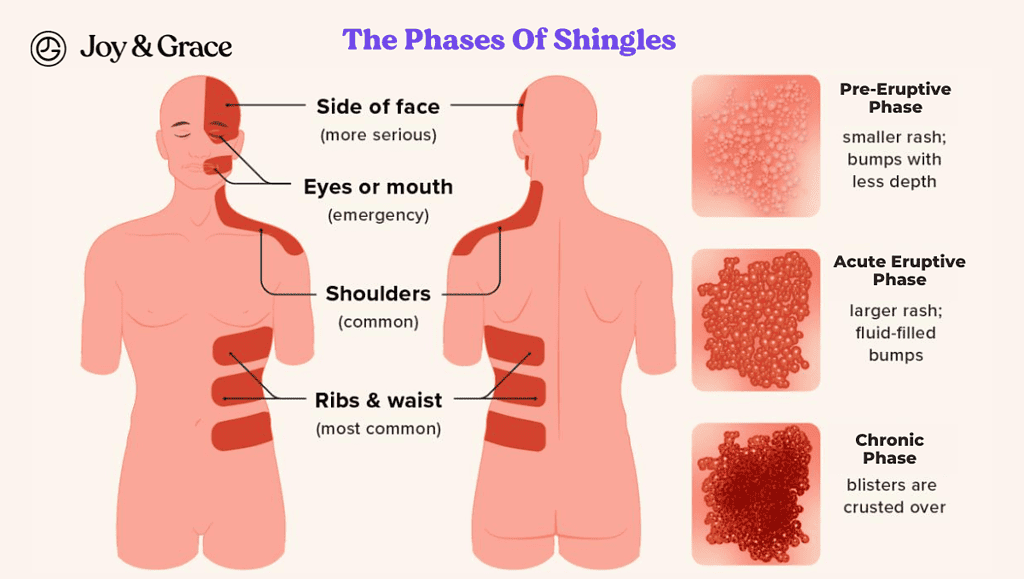
Although shingles is best known for the rashes it causes, they are actually not the first symptoms to appear. You may first feel pain in the affected area. The symptoms of shingles usually appear in stages and occur after being exposed to possible triggers:
- Emotional stress
- Use of medications that suppress your immune system
- Malignancies
- An injury
- Other infections or illnesses
- Contact with someone infected with the varicella-zoster virus
Pre-Eruptive Phase
The first sign of shingles can be pain localized at the affected dermatome. This is called the pre-eruptive phase. During this phase, you may also feel itching and tingling sensations. The pain, and any sensation that comes along with it, is also called preherpetic neuralgia.
Other symptoms that you may feel include:
- Fatigue
- Headaches
- Chills
- Body aches
- Fever
- Stomach pain
- Light sensitivity
Depending on the dermatome affected, the pain may be mistaken for migraines and cardiac and abdominal diseases. After 2-3 days, this phase is immediately followed by the acute eruptive phase.
Acute Eruptive Phase
The acute eruptive phase is when the painful rash starts to appear. The rash can appear as closely grouped blisters. These blisters can break and scab within 7 to 10 days and can clear up within 2 to 4 weeks.
These rashes often appear on only one side of the body and can sometimes resemble a belt, band, or stripe.
Chronic Phase: The Final Stage Of Shingles?
The final stage of shingles is called the chronic phase. This stage is characterized by pain, called postherpetic neuralgia, that can last for more than 30 days. Postherpetic neuralgia is usually localized to the part of your body that was originally infected. It can be debilitating and can persist for months or even years.
Postherpetic neuralgia occurs when the infection damages your nerves. When this happens, they can no longer process pain signals properly. This can result in pain due to stimuli that typically wouldn’t produce pain (allodynia) and increased pain sensitivity (hyperalgesia).
This means that you may feel pain from touching a cotton ball or excruciating pain from something as small as a pinch (as much as we all detest pinches to begin with).
What Does The Pain From Postherpetic Neuralgia Feel Like?
The pain from postherpetic neuralgia can either be:
- Constant pain without a painful stimulus. This can feel like a burning, aching, or throbbing sensation.
- Pain that may come and go and occurs without any painful stimuli. This may feel like an electric shock, stabbing, or shooting pain.
- Excruciating and debilitating pain that follows a stimulus that was already painful.
Postherpetic neuralgia is more common when upper dermatomes of your body are involved. These include the neck, torso, and back.
What Areas Of The Body Can You Get Shingles?
Shingles can appear anywhere in your body. However, it is more common in the following areas:
- Torso (53%)
- Neck (20&)
- Face and eyes (15%)
- From the lower back down to the legs (11%)
The symptoms usually appear on only one side of your body.
What Pain Reliever Is Best For Shingles?
Shingles usually goes away on its own, and over-the-counter painkillers may be enough to relieve your pain. If these drugs don’t work, you can ask your doctor to prescribe stronger pain medication.
You can also use a calamine lotion to help you stop scratching the rash.
Other ways to help ease the pain of shingles include:
- Topical capsaicin cream
- Emla cream or lidocaine cream
- A warm bath mixed with ground oatmeal (as weird as it may sound)
Although it is a benign condition, adults are still recommended to treat it with antivirals. This is because we are more likely to develop postherpetic neuralgia.
Takeaway
Shingles is the reactivated form of the sleeping chicken pox virus, and we definitely do not want to wake up. It can cause rashes to appear on any part of your body and may cause neck pain, too.
It is a benign disease that usually resolves on its own, and over-the-counter medications can be enough to relieve any pain. However, it is still important to watch out for possible triggers and to keep our immune system in tip-top shape to prevent having a literal itchy pain in the neck.
If you found this article helpful and enjoy reading articles like this, make sure to sign up for our newsletter. Till next time!
